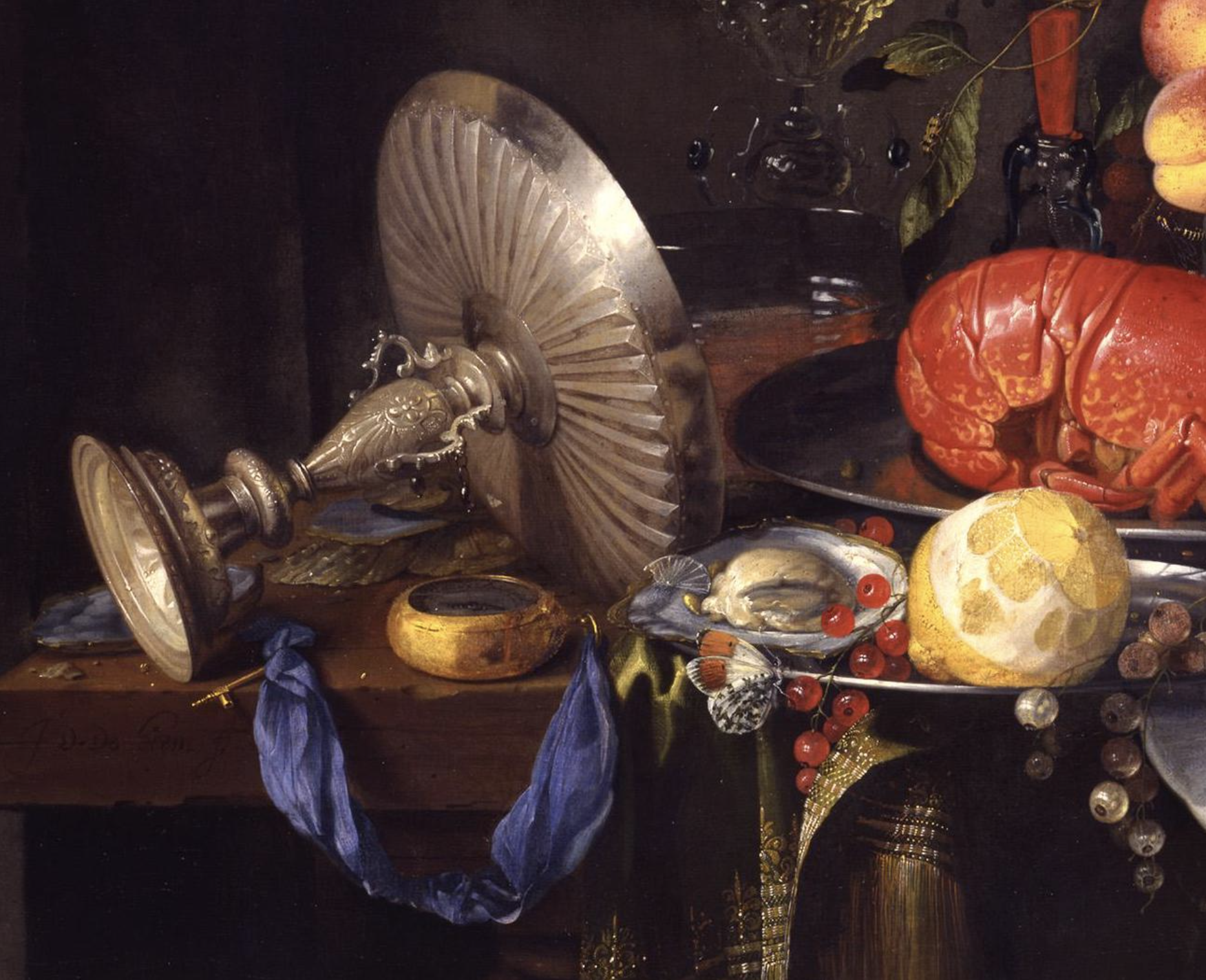‘Colouring’, Material depiction in Flemish and Dutch baroque art theory

Dit artikel verscheen naar aanleiding van het symposium The Skin of Things. waaraan een bijzondere uitgave van het tijdschrift Art & Perception werd gewijd: een bundel van kunsthistorische en perceptie-wetenschappelijke artikelen over stofuitdrukking in de schilderkunst.
Zie het hele tijdschrift op de website van uitgeverij Brill.
De zeventiende-eeuwse schilderkunst van de Noordelijke en Zuidelijke Nederlanden (Nederland en België) is bekend om de overtuigende materiaalweergave in verf. Stofuitdrukking lijkt echter nauwelijks expliciet te worden beschreven in kunstenaarshandleidingen uit die tijd. Is dat zo en hoe dacht men destijds over stofuitdrukking in de schilderkunst?
Samenvatting van dit artikel (Engels): Seventeenth-century painters were masters at painting objects and beings that seem tangible. Most elaborate was painting translucent materials like skins and pulp: human esh and grapes, for instance, require various surface e ects and suggest the presence of mass below the upper layers. Thus, the viewer is more or less convinced that a volume or object is present in an illusionary space. In Dutch, the word ‘stofuitdrukking’ is used: expression or indication of material, perhaps better understood as rendering of material. In English, ‘material depiction’ probably captures this painterly means best: it includes rendering of surface e ects, while revealing the underlying substance, and it implies that weight and mass are suggested. Simple strokes of paint add up to materials and things that are con- vincingly percieved. At rst glance, material depiction hardly seems a topic in early-modern art the- ory, yet 17th-century painters are virtually unequalled as regards this elaborate skill. Therefore, 17th- century written sources were studied to de ne how these might discuss material depiction, if not distinctly. This study concerns one of many questions regarding the incredible convincingness of 17th-century material depiction: besides wondering why the illusions work (Di Cicco et al., this is- sue) and how these were achieved (Wiersma, in press), the question should be asked why this con- vincingness was sought after. Was it mere display of ability and skill? And how was material depic- tion perceived, valued and enjoyed? First, contemporary terminology is determined: the seemingly generic term ‘colouring’ signi ed the application of convincing material depiction especially — which is not as self-evident as it sounds. Second, and extensively, the reader will nd that convincing or appealing material depiction was considered a reference to religion and natural philosophy.
